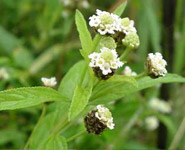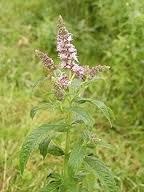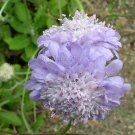| Herb | Use | Cost in Market |
| Senegal Gum Acacia | ||
 | The gum produced at the end of the rainy season can be used to make a cream for skin inflammations and ailments of the respiratory and urinary tracts. Its also used for coughs, sore throats, eyewash, diarrhea, and dysentery. | TBA GM |
| The Baobab Tree | ||
 | The Baobab tree has many medicinal uses; the baobab tree is high in vitamin C and calcium and therefore the leaves and fruit are eaten to protect against illness. The bark of the African baobab tree is used to treat fever; its medicinal use was considered to be of such value that Europeans used the bark in place of cinchona bark (from where quinine was obtained) to protect against malaria. | TBA |
| Candelabra Tree | ||
 | WARNING DO NOT TOUCH The candelabra tree is beautiful, but poisonous. If a drop of the white sap from the inner tree comes in contact with the skin a blister will form. It will blind you if it touches the eyes and even breathing the fumes burns. This sticky poisonous latex along with its sharp spines makes it so animals don't feed on it. | No cost |
| Gum Tree Eucalyptus | ||
 | treats many sicknesses such as: infections, colds, flu, sore throats, bronchitis, pneumonia, aching, stiffness, neuralgia and even some skin infections. | TBA |
| Jackalberry Tree | ||
 | Tanin is contained in the leaves, bark and roots, and acts as an astringent that helps stop bleeding. The tree is also supposed to have antibiotic substances that help heal wounds. A mixture made from the roots is used get rid of parasites like ring worm, and dysentery and fever. It is also considered a remedy for leprosy. | TBA |
| River Bushwillow | ||
 | The roots can be used as a de-worming remedy for dogs | TBA |
| Umbrella Thorn Acacia | ||
 | The stem of the tree is used to treat asthma, and diarrhea. The bark of the acacia is used as a disinfectant. | TBA |
| Zebra Aloe | ||
 | treat arthritis, skin cancer, burns, eczema, psoriasis, digestive problems, high blood pressure and diabetes | TBA |
| Widow's Stomachberry | ||
 | The roots and tubers are used for stomach, kidney and bladder complaints as well as dysmennorhoea and infertility. It is adinistered as an enema for delayed menstruation and it is also used to facilitate childbirth. People uses of this plant suggest that it may have analgesic effects. | TBA |
| Bluebell Heart | ||
 | treat heart disease, paralysis, coughs, colds, chest pains and tightness | TBA |
| Ragged Opal | ||
 | remedy for respiratory tract infections, asthma, sore throat, gastro-intestinal complaints, fever, rheumatism, bleeding wounds and headache. | TBA |
| Tree Grape | ||
 | Leaf sap is used to cure ophthalmia and it is applied to cuts. Leaves are chewed to remedy a sore throat , and macerated leaves are mixed with honey as a cough treatment . Leaves heated over a fire are applied as a compress to reduce swellings . Leaves are applied to the chest to cure pneumonia and an infusion of the leaves is taken as a purgative and to treat swollen abdomen. Macerated roots are taken against tapeworm . The root has been used to treat malaria. A paste made of the roots is applied topically to draw abscesses and reduce swellings in northern Ghana, Gabon and East Africa. Water in which roots have been boiled is drunk to treat syphilis, abdominal pain (related to pregnancy or not) and to prevent abortion. Root and leaf are prescribed against diarrhoea with blood. | TBA |
| Elephant Root | ||
 | remedy for dysentery and diarrhoea, stopping bleeding, treating intestinal disorders, haemorrhoids, heart ailments and syphilis. It has also been used as an aphrodisiac, and a decoction from it has been used as a remedy for bovine and equine diarrhoea. An extract of the fleshy underground parts of the plant is used to treat sunburn. Roasted, the seeds have sometimes been used as a coffee substitute, although reportedly it is an acquired taste. Otherwise the seeds are toxic to several animals, including humans. | TBA |
| Pineapple Lily | ||
 | Decoctions of the bulb in water or milk are usually administered as enemas for the treatment of low backache, to assist in post-operative recovery, and to aid in healing fractures. Decoctions are also used for a variety of ailments, including urinary diseases, stomach ache, fevers, colic, flatulence, hangovers and syphilis, and to facilitate childbirth. The subspecies clavata is also used for coughs and respiratory ailments, biliousness, lumbago, blood disorders, venereal diseases and to prevent premature childbirth. Several homoisoflavones are found in Eucomis autumnalis, and flavonoids are known for their anti-inflammatory and antispasmodic action. It also contains some steroidal triterpenoids and they are known to be beneficial in wound therapy. | TBA |
| Hottentot's tea | ||
 | medicine for chest complaints, colic in children, coughs, colds, internal sores, fever, headaches, and for dressing wounds. | TBA |
| Yellow Star | ||
| Weak infusions and decoctions of the corm are used as a strengthening tonic and during convalescence, and against tuberculosis and cancer. It is also used for prostate hypertrophy, urinary tract infections, testicular tumors, as a laxative and to expel intestinal worms. Anxiety, palpitations, depression and rheumatoid arthritis are further ailments treated with the plant. | TBA | |
| Lemon Bush | ||
 | drink at as a weak infusion as a tea substitute and in a stronger infusion for the treatment of coughs, colds and bronchial problems in general. They use the leaves and stem and drink it with milk or water. In addition the Xhosa people also use Lippia javanica for the disinfection of meat that has been infected with anthrax. This herb is also said to be affective against fever, especially in cases of malaria, influenza, measles, and as a prophylactic against lung infections. In these cases Lippia javanica is often mixed with another herb Artemisia afra. The smoke from the herb has proven to be affective, if inhaled, against asthma, chronic coughs and pleurisy. The leaves and stems are burned. Skin disorders, such as heat rash and other rashes, as well as scratches, stings and bites can also be treated. Here the tea is usually cooled and then applied like a lotion. Even lice and scabies can be treated with it. | TBA |
| Wild Mint Tea | ||
 | tea that is drunk for coughs, colds, stomach cramps, asthma, flatulence, indigestion and headaches. Externally, wild mint has been used to treat wounds and swollen glands. | TBA |
| Cream Cups | ||
 | remedy against syphilis and to aid conception. Powdered root is a remedy for haemorrhoids. Concoctions of the roots have been used to treat dropsy, dysentery and even snakebite. The rootstock is mixed with the pounded root of Xysmalobium undulatum to make medicine, which is used for diarrhoea, dysentery and to soothe after-birth cramps. It is also used as a tonic for the cardiovascular system. All parts are extremely bitter and are used in various decoctions and infusions as an emetic, diuretic and purgative. People use the roots for indigestion, malaria and other fevers (including typhoid fever). Others use infusions of the root for colic and abdominal troubles and sniff the dried pounded roots to relieve headaches. | TBA |
| Wild Verbena | ||
 | applied externally for burns, swellings, rheumatism, heartburn, vomiting, fever, toothache, tuberculosis, snakebite and haemorrhoids. It is taken by pregnant women to ensure an easy childbirth and leaf poultices are applied for a retained placenta. | TBA |
| Baboon Grape | ||
 | to strengthen the part of the head of babies which is soft and pulsating. The swollen root is cut into quarters and boiled in water; this is used to make a soft mealie pap which is fed to the infant and then also portions of the plant are stamped into a pulp and applied over the fontanelle. This plant is also used as an epilepsy remedy and the purple fruit is edible. People take a decoction of the root as a nerve stimulant and gonorrhoea remedy and the plant juice is used as a dressing for spear wounds. | TBA |
| Cape Scabious | ||
 | The roots and leaves are used to treat colic and heartburn. The powdered roots are also used as a pleasant-smelling baby powder. | TBA |
| Blue squill | ||
 | toxic to man when raw, even the sap is reported to burn the skin, and for any preparations taken internally the plant must first be heated. This plant should be treated with extreme caution, as taking any part of it internally is potentially fatal. Warmed fresh bulb scales, slightly burned bulb scales and decoctions of the bulb are used externally as ointments for wound-healing, to treat sprains, fractures, boils and sores and to draw abscesses. The ash from a burnt plant, and the bulb in powdered form, is rubbed into cuts and scratches, and over sprains and fractures. Decoctions are taken as enemas for female infertility and to enhance male potency and libido. It is also known to be used as a purgative, a laxative and for internal tumours, and is used in conjunction with other ingredients in infusions taken during pregnancy to facilitate delivery and in treatments for chest pain and kidney troubles. | TBA |
| Two-Color Vernonia | ||
 | used as a remedy against mild forms of diabetes. | TBA |
- Getting Started
- Help
- Master Lists
- Useful Links
- Features
Trial Drykas Medicinal Herb Chart (DO NOT USE AS REFERENCE)
(This is a thread from Mizahar's fantasy role playing forums. Why don't you register today? This message is not shown when you are logged in. Come roleplay with us, it's fun!)Not found on any map, Endrykas is a large migrating tent city wherein the horseclans of Cyphrus gather to trade and exchange information. [Lore]
Moderator: Gossamer
Trial Drykas Medicinal Herb Chart (DO NOT USE AS REFERENCE)
![]() by Aoife Pulchra on April 19th, 2012, 9:52 pm
by Aoife Pulchra on April 19th, 2012, 9:52 pm
-

Aoife Pulchra - Player
- Posts: 13
- Words: 3136
- Joined roleplay: March 30th, 2012, 11:49 pm
- Race: Human
- Character sheet
1 post • Page 1 of 1
Who is online
Users browsing this forum: No registered users and 0 guests